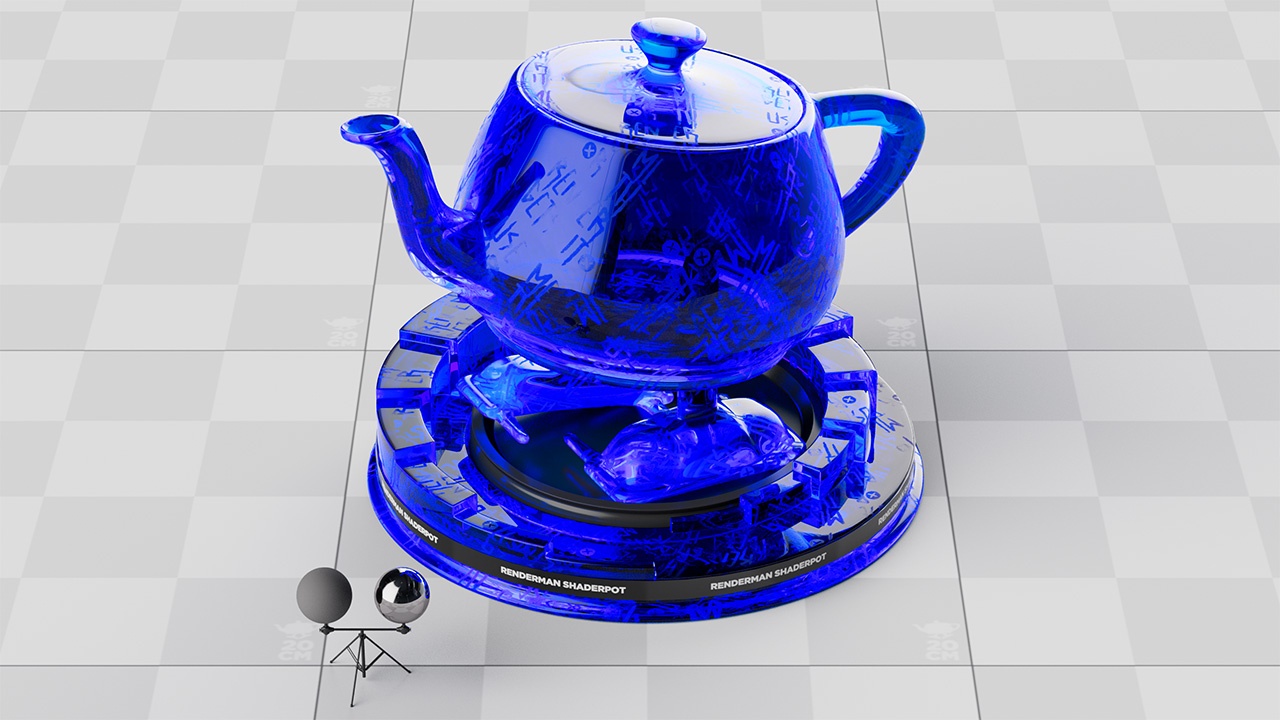Contents
SPECULAR
Reflection Tint
Colour multiplier for external reflection. It should be used sparingly, as a non-white value breaks physicality.
Transmission Tint
Colour multiplier for rays going inside the medium (covers external transmission and internal reflection). It should be used sparingly, as a non-white value breaks physicality.
The preferred way to define the color of a dielectric is through the Interior attributes right below.
Fresnel Mode
Switches the Fresnel between Artistic and Scientific parameters.
The Artistic mode offers reflectivity in the normal direction and reflectivity90 at the grazing angle.
The Scientific mode provides an index of refraction for each RGB component. Note that IOR is only used to calculate the reflectivity value used by the Schlick approximation.
When reflectivity90 is 1, then both modes achieve identical results, as one can be mapped to the other.
Reflectivity
Colour reflected by the surface in the normal direction. Corresponds to specColor.
IOR
Index of refraction (often denoted by "eta"), defining the amount reflected by the surface in the normal direction, and how the rays are bent by refraction. A separate value can be specified for each color channel if desired.
Reflectivity 90
Colour reflected by the surface at the grazing angle. Should be kept at 1,1,1 for most materials. Corresponds to specColor90.
ReflectivityProfile
The inverse of the exponent to use for Schlick
Roughness
Micro facets or tiny bits of roughness can scatter light in a way that has a blurry result. The less rough, the mirror-like, and smooth/slick the material may look. High values will simply look diffuse.
Normal/Bump
Here is where you supply a signal, either a texture or procedural pattern, to create a bump to the surface to "fake" surface details like small bumps or scratches. This means an artist doesn't have to model these tedious and often repetitious parts of a model.
Tail Parameters
Mix
How strong the tail effect should be in a linear fashion.
Length
Defines the roughness of the tail, full roughness at 1.0 will stretch the furthest with 0.0 being no roughness or no length.
Anisotropy Parameters
Anisotropy
This control determines the direction light travels, more forwards (positive) or more backwards (negative) toward the light source when it travels through the object.
Direction
This allows you to alter the direction of the anisotropy using a tangent map/pattern.
Rotation
You can rotate the specified direction around the normal a full 360 degrees.
Interior Parameters
These parameters control the bulk of a dielectric material. When you think of what makes a glass object look like it does...the color and clarity, it's the absorption.
Absorption Color
Interior volume absorption color. It is defined as the negative logarithm of the extinction coefficient, with values between 0 and 1, such that the object itself and its shadows are tinted proportionally. If set to 1, there is no absorption, and if set to 0, the object will be completely opaque. Note that for single scattering to kick in, the value must be inferior to 1. This value will also act as a coating color when this node is used as a top layer in a stack.
Absorption Radius
The maximum reach in scene units of light before it is absorbed.
Scatter Color
This defines the color of the light that gets scattered rather than absorbed by the above absorption controls.
Scatter Anisotropy
This defines the scattering direction of the light, it can be forward (positive) or backwards (negative) scattering. A value of 0 is isotropic, all directions.
Shadow Parameters
Density
This controls how opaque the resulting shadow is after taking into account the above parameters controlling Fresnel, coloring, absorption, etc. A value of 0 is a fully transparent or invisible shadow.
Coloring
Controls the resulting coloring of the shadow where 0 is black and 1 is the same as the color set as Transmission Tint.
Fresnel Front
This sets the influence of the Fresnel setting on the shadow after a ray passes through front-facing geometry.
Fresnel Back
This sets the influence of the Fresnel setting on the shadow after a ray passes through back-facing geometry.
Advanced Parameters
Exterior IOR
This defines the exterior medium IOR be it air (the default), water, or a layered material like a varnish on top using a Stack node.
Energy Compensation
This allows you to add energy to the result as microfacet or very rough materials may lose energy and artificially darken the result.
Surface Mollification
This defines the roughness based on curvature and may help reduce fireflies or bright pixels/artifacts in rendering.
Motion Mollification
This defines the roughness based on the motion of the object and may help reduce fireflies or bright pixels/artifacts in rendering.
Lobe Name
Defines the Arbitrary Output Variable (AOV) name for the resulting Light Path Expression (LPE)
Interior Id
If several stacked dielectric lobes with extinction have the same Lobe Name, they need to have different defined Interior Ids. If their Lobe Names are different then the Id is irrelevant.
Matte
This defines the name of the lobe output of the final lobe weight to an Arbitrary Output Variable (AOV)

